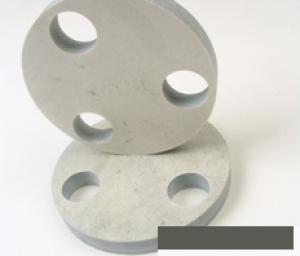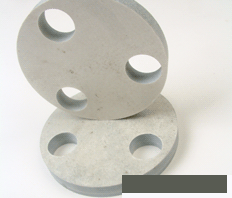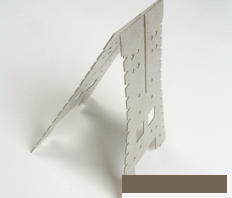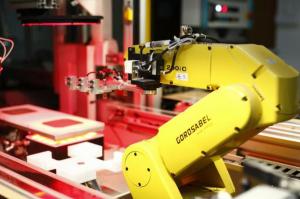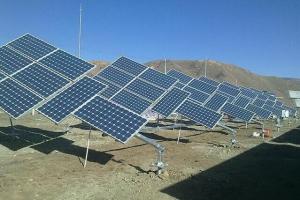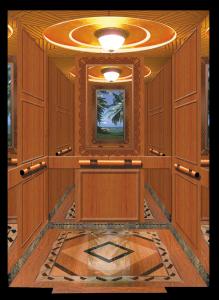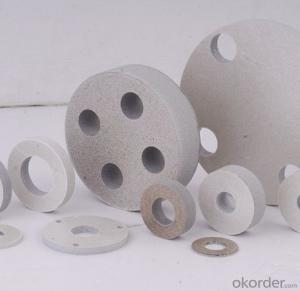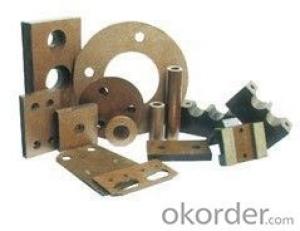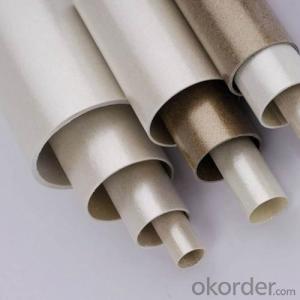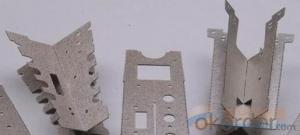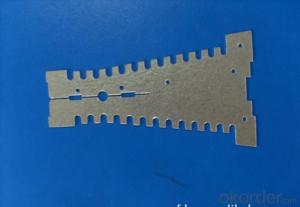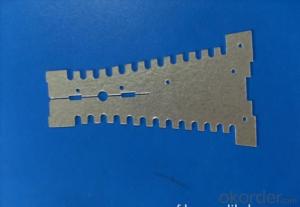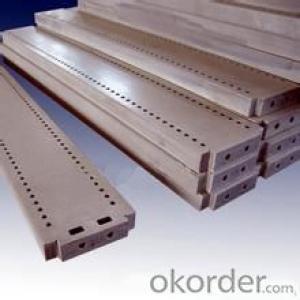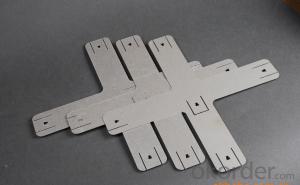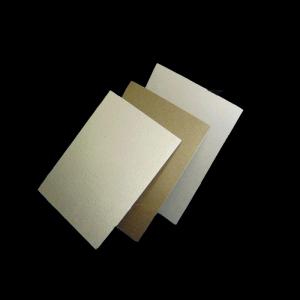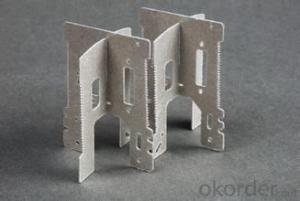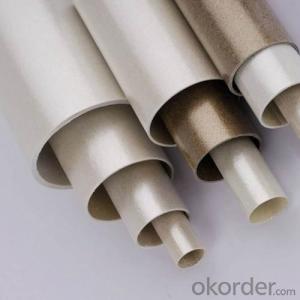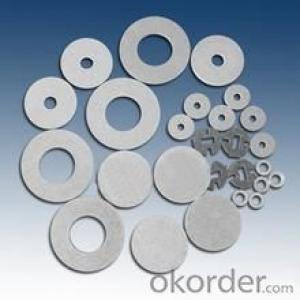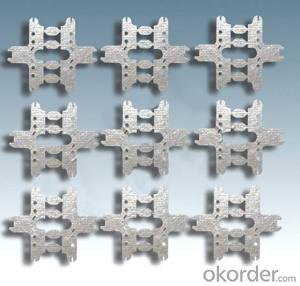Special Sized Mica Parts Used as Lining Plate in High Temperature Industry
- Loading Port:
- Shanghai
- Payment Terms:
- TT OR LC
- Min Order Qty:
- 100 pc
- Supply Capability:
- 10000 pc/month
OKorder Service Pledge
OKorder Financial Service
You Might Also Like
1. Introduction:
Mica is a rigid substrate able to withstand very high temperatures and are suited for applications up to 500°F (260°C). Mica heating elements offer several distinct advantages over other flexible heater technologies, including extremely low leakage, lower material costs, and higher operating temperatures. Our mica heating element is made by detail order requirments.
2. Main features of Mica Parts:
Mica heating elements offer several distinct advantages over other flexible heater technologies, including extremely low leakage, lower material costs, and higher operating temperatures. Our mica heating element is made by detail order requirments.
3. Applications:
Typical applications of mica heating elements are air heaters, enclosure systems, food service equipment, process and packaging equipment.
4. Technical Parameters:
MICA SHEET -----Technical data | ||||||||
ITEM | UNIT | RM | RP | RM-T | RP-T | FM | FP | |
Hardness |
| Rigid | Rigid | Rigid | Rigid | Flexible | Flexible | |
Mica paper |
| Muscovite | Phlogopite | Muscovite | Phlogopite | Muscovite | Phlogopite | |
Thickness | mm | 0.1-2.0 | 0.1-2.0 | 3.0-50 | 3.0-50 | 0.1-2.0 | 0.1-2.0 | |
Mica content | % | ≥90 | ≥90 | >88 | >88 | ≥90 | ≥90 | |
Bond Content | % | <10< span=""> | <10< span=""> | <12< span=""> | <12< span=""> | <10< span=""> | <10< span=""> | |
Density | g/m 3 | 1.6~2.45 | 1.6~2.45 | 2.1~2.4 | 2.1~2.4 | 1.6~2.45 | 1.6~2.45 | |
Heat | Continuous | ℃ | 500 | 700 | 500 | 700 | 500 | 700 |
Peak | ℃ | 700 | 900 | 700 | 900 | 700 | 900 | |
Heat loss at 500℃ | % | <1< span=""> | <1< span=""> | <1< span=""> | <2< span=""> | <1< span=""> | <1< span=""> | |
Heat loss at 700℃ | % | <2< span=""> | <2< span=""> | <1< span=""> | <2< span=""> | <2< span=""> | <2< span=""> | |
Flexural strength | Mpa | >160 | >140 | — | — | <1< span=""> | <1< span=""> | |
Water absorption 24h/23°C | % | <1< span=""> | <1< span=""> | <1< span=""> | <2< span=""> | — | — | |
Dielectric strength | KV/mm | >20 | >20 | >15 | >15 | >15 | >15 | |
Volume | 23℃ | ΩNaN | >1017 | >1017 | >1017 | >1017 | — | — |
500℃ | ΩNaN | >1012 | >1012 | >1012 | >1012 | — | — | |
Smoking Test | s | <4< span=""> | <4< span=""> | — | — | — | — | |
FAQ
We have organized several common questions for our clients,may help you sincerely:
--------What is the use of mica parts?
Mica laminate and washers made of our own high quality mica plates are used for home appliances, electro-magnets, micro-sensitive control gear etc
---------Which type of mica parts we can produce?
1. Rigid mica parts or Flexible mica parts
2. Muscovite mica parts or phlogopite mica parts
3. Thin mica parts or thick mica parts
4. All the special sized mica parts need drawing.
----------what advantages of mica parts?
1. Good high voltage insulation materials
2. Do not easily break up
3. Easily produce special size
- Q: The electrical equipment in the classroom which uses insulating material
- Insulation material characteristics: chemical resistance with gloss, some transparent or translucent most of the good insulator light weight and strong processing can be easily mass production, cheap and wide range of uses, utility, easy to color, some high temperature
- Q: What is the 8 ° C rule for insulating materials?
- The service life will be greatly shortened, such as ATR insulation material limit working temperature of 105 ℃, when the ultimate working temperature of 8, the life will be reduced by about half, which is the so-called 8 ℃ thermal deterioration rules
- Q: There are a lot of online about this, but still do not understand. If the insulation resistance is high enough, hit the pressure should also be qualified ah. There is insulation test itself when the current flow is not large, because the rock table resistance is great. But hit the pressure, I do not know is not a direct high pressure drop in the test product above, there is no great resistance to interference?
- Insulation test Because the test voltage is low, it is not easy to damage the equipment under test. The voltage test is easy to damage the equipment under pressure when the test voltage is high. In some cases, although the withstand voltage test is passed, Causing damage, the test staff will have to use low-voltage insulation test, test the pressure test after the test equipment insulation. Under normal circumstances, insulation resistance qualified, withstand voltage test will be adopted.
- Q: Brass is not an insulating material?
- Brass is a particularly good conductive material and is a good material for wearing heat
- Q: What insulating materials are used for transformers
- Dry type transformers before the 1960s are mainly B-type insulation of the open-type dry-type transformers, product model for the SG type. When there is no foil coil, the low pressure for the majority of multi-root and around the layer or spiral coil, high pressure for the pie coil. Wire for the double glass envelope or single glass fiber package enamel enameled wire. The rest of the insulating material is mostly phenolic glass fiber materials. The impregnation process for the room temperature, atmospheric pressure with B-class insulation impregnated paint were high and low pressure coil impregnation and drying at the temperature (drying temperature does not exceed 130 ℃). Although this dry-type transformers than oil-immersed transformers in the fire performance has made great progress, but its moisture, anti-pollution performance is worrying. Is no longer produced. Nevertheless, its successful electrical, magnetic, thermal calculations and structural design have laid a good foundation for the new H-class insulated open-ended transformers that have evolved later.
- Q: Who knows what are the ability of 1300 degrees above the high temperature, insulation materials?
- Such as tungsten, molybdenum, tantalum, niobium, vanadium, chromium, titanium, zirconium and other refractory metals and rare earth metal borides, carbides, nitrides, silicides, phosphides and sulfides; the latter such as boron carbide, Silicon carbide, boron nitride, silicon nitride, boron phosphide, silicon phosphide and the like. The latter has a very important use, can be used as high temperature refractory materials (such as abrasive, mold, nozzle, high temperature thermocouple casing), heat-resistant materials (such as rocket structure components, nuclear engineering materials, electric components), electrical materials Such as high temperature thermocouple, ignition electrode), in addition to chemical resistance materials and hard materials.
- Q: What insulating materials do you need for power tools?
- Reinforced insulation: the voltage between the live parts and the accessible housing is 3750V, such as the voltage between the brush and the cover surface; double insulation: basic insulation + additional insulation. Main insulating material: green paper or DMD Insulation paper for basic insulation; shaft insulation and plastic housing for additional insulation; rotor insulation end plate, stator insulation end plate, used to control the creepage distance and electrical clearance; brush grip bakelite powder, used to strengthen the insulation; other parts (Power plugs, commutators, switches, etc.) These are pressure requirements.
- Q: What is the main purpose of insulating materials?
- The role of insulating material is in the electrical equipment to separate the potential of the live part of the insulation, so the insulation material should first have a high insulation resistance and pressure strength, and to avoid leakage, breakdown and other accidents.
- Q: Wear-resistant, high temperature, insulation materials which
- Alumina - high temperature, corrosion resistance, wear resistance. Good electrical insulation 1600 ℃. For crucible, high temperature thermocouple casing, knives, mold and so on. Silicon nitride - has good high temperature strength, thermal expansion coefficient is small, high thermal conductivity, thermal shock resistance, the use of temperature as alumina, good electrical insulation. 1200 ℃ still have a high hardness. For mechanical seal ring, thermocouple casing, steam turbine blades and so on. Silicon carbide - high temperature strength, 1400 ℃ when the bending strength of (500 ~ 600) MPa. For the nozzle, furnace tubes, high temperature bearings, high temperature heat exchangers and so on.
- Q: What is the thermal aging and electrical aging of insulating materials?
- Insulation materials in electrical equipment during the operation, due to the long-term effects of various factors, there will be a series of irreversible physical and chemical changes, resulting in its electrical performance and mechanical properties decline, commonly known as aging. There are many factors that affect the aging of insulating materials. The main aging forms are environmental aging, heat aging and electrical aging.
Send your message to us
Special Sized Mica Parts Used as Lining Plate in High Temperature Industry
- Loading Port:
- Shanghai
- Payment Terms:
- TT OR LC
- Min Order Qty:
- 100 pc
- Supply Capability:
- 10000 pc/month
OKorder Service Pledge
OKorder Financial Service
Similar products
Hot products
Hot Searches
